Original air date: 30 January 1979
This is the first programme where plants play a major role, life is crawling onto dry land. The outline shows the focus switching constantly between plants (shown in green, naturally) and animals (shown in blue). Making the image easier to understand text pointing at animal participation is also blue.

Because the outline would otherwise become rather crammed the text explanations are cut short and a more detailed text version is left for a different outline, below.
A text version of the image above gives different, but more detailed, information
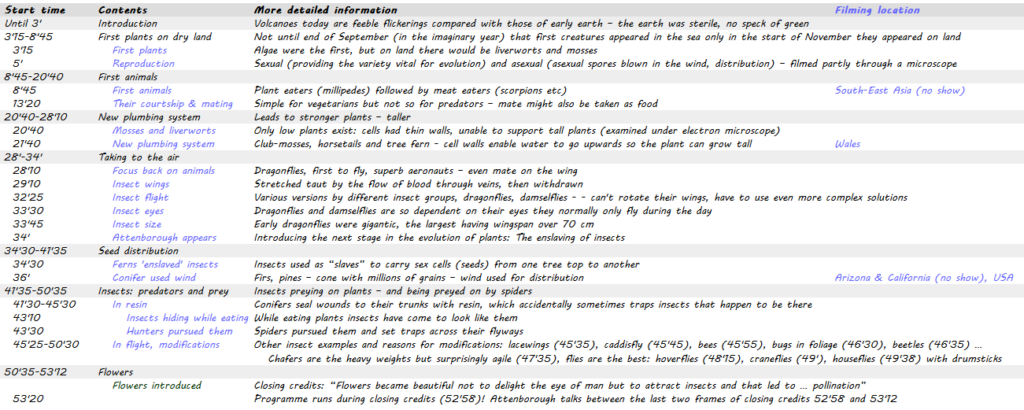
It should be pointed out, for the case of clarity, that for filming locations in USA Attenborough appeared in the sequence in the petrified forest in Arizona, but not in the sequence filmed in California where the giant sequoia was filmed. Therefore a “no show” is included there.
Selected material
Filming underground
The technology of filming underground is based on using glassy panes. That was no new technology at that time but it shows how planning ahead is vital

The plants at this time had very thin walls
To realise the structure of the early plants you would have to cut through it and cut it to produce a slice thin enough for a microscope.
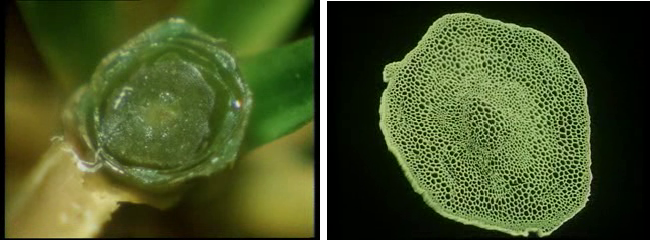
Insects in flight
A damselfly in flight 32’27-32’46
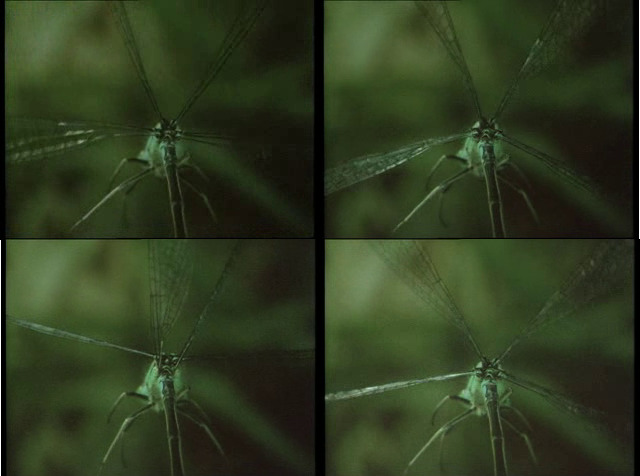
During the 20 seconds that the fly is filmed flying Attenborough explains in rather simple terms the physics of it flying, upward and downward thrusts of the wings. The total filming of the damselfly’s flying lasts almost a minute more showing various other ways in which it can fly and comparing it with man-made machines.
Insects with two pairs of wings need some arrangement to have them work together. The ‘usual’ way is a line of hooks on the front edge of the back wing. This is the way bees do it.
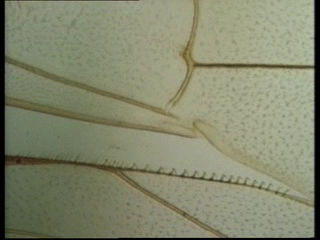
Both sequences of insects in flight (32’25-33’30 & 45’35-50’30) are among the most impressive ever seen. The first – as the above snapshots indicate – is about the damselfly. The second part is about how other insects solve this problem, see below.
Taking flight

Beetles, for example, live their lives on the ground digging so they had to convert the front pair of wings as a protective cover to protect the back pair – which was meant for flying. When taking to the air the front pair had to be kept out of the way. Once in the air the wing covers work as stabilisers.
The best aeronauts of all
The flies. In their case there is only a single pair of wings, the back pair has become only vestigial clubs on stalks that help keep the balance by vibrating. Different flies have them in different places.
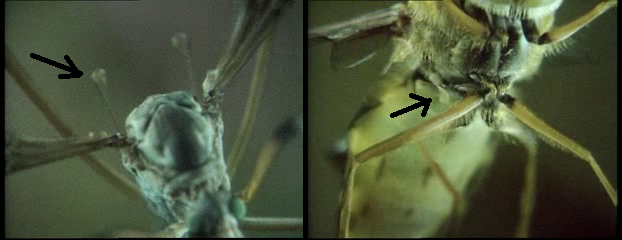
It was rather obvious the crew kept the animals in a cool place until filming, otherwise the insects would fry but it seems extraordinary they could be filmed anyway. It is worth wondering how they could be kept so practically steady in the centre of the frame. Perhaps by their own nature to remain steady at all times.
Technical brilliance is not all that was needed in the programme, storytelling is also taken to a new level with the idea of introducing the following programme during the end credits while showing flowers on screen.
Filming locations
Using ‘violent methods’ to seek fossils in the Welsh hillside (21’40-23′)
The petrified forest of Arizona, USA (36′-37′)